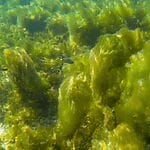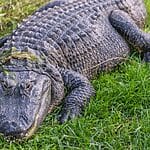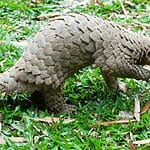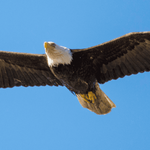Nicaragua’s position between the Caribbean and Pacific oceans fosters exceptional biodiversity across its rainforests, cloud forests, and volcanic landscapes. This intersection of ecosystems gives rise to a stunning array of wildlife, from over 700 bird species to apex predators like jaguars and bull sharks that evolved to swim in freshwater Lake Nicaragua.
However, advancing agricultural frontiers and urbanization increasingly threaten fragile ecosystems and endangered species. Nearly a third of Nicaragua’s land is protected, yet expanded conservation initiatives remain imperative to safeguard its remarkable natural heritage against fragmentation and biodiversity loss.
This complex intersection of geography, wildlife and people sets the stage for exploring the captivating, intricate world of animals in Nicaragua.
Key Takeaways:
- Nicaragua has exceptionally high biodiversity, with over 700 bird species and abundant mammal and reptile populations in its rainforests, wetlands, and aquatic ecosystems.
- Iconic species like jaguars, macaws, humpback whales, and sea turtles rely on Nicaragua’s habitats but face threats from deforestation, hunting, and climate change.
- Nearly a third of Nicaragua’s land is protected, providing vital safe havens for endangered wildlife like Geoffroy’s spider monkeys and Baird’s tapirs.
- Community-led conservation initiatives are protecting key species, using incentives like eco-tourism and turtle hatcheries to make preservation mutually beneficial.
- Ongoing challenges require expanded habitat connectivity, anti-poaching enforcement, and climate resilience to ensure the survival of Nicaragua’s extraordinary natural heritage.
List of Unique Animals in Nicaragua
Quick Answer: Nicaragua’s diverse ecosystems support an abundance of wildlife, including jaguars, macaws, sea turtles, and over 700 bird species. However, advancing deforestation and climate change threaten many endemic and migratory species, making conservation initiatives imperative to preserve this exceptional biodiversity.
| Category | Details |
| Mammals | Jaguars and pumas are top predators in the forests, with monkeys, Baird’s tapirs, and peccaries also prominent. |
| Birds | Over 700 species, including harpy eagles, macaws, and the national bird, the turquoise-browed motmot. |
| Reptiles and Amphibians | American crocodiles dominate waterways, while a rich variety of snakes and over 175 frog species thrive in diverse habitats. |
| Freshwater Life | Lake Nicaragua hosts unique species like cichlids and freshwater bull sharks, indicating a complex and rich aquatic ecosystem. |
| Marine Wildlife | Humpback whales migrate to breed, while diverse fish populations and coral reefs support robust marine life. |
| Endangered Species | Conservation efforts focus on protecting species like Geoffroy’s spider monkeys, Baird’s tapirs, and sea turtles. |
1. Mammals of Nicaraguan Forests

Jaguars, Pumas, and Other Big Cats
Nicaragua’s forests are home to several species of big cats, most notably the jaguar and puma.
Jaguars are the largest cats in the Americas, weighing up to 300 pounds. They have tan coats with distinctive black rosette patterns and are formidable predators.
Jaguars hunt by stalking prey like deer, peccaries, and tapirs before pouncing and delivering a lethal bite. They play an important ecological role as top predators, helping regulate prey populations.
Jaguars once ranged across much of Central America but have seen declines due to habitat loss and hunting. Nicaragua’s protected areas like Bosawás Biosphere Reserve provide refuge and conservation efforts aim to preserve vital jaguar corridors.
Pumas, also known as cougars or mountain lions, also prowl Nicaraguan forests. Though smaller than jaguars, pumas can reach 220 pounds and prey on animals like rodents, monkeys, and deer.
Pumas are stealthy ambush hunters that rely on stalking and the element of surprise to catch prey. Both jaguar and puma populations face threats from deforestation and conflict with farmers.
Education programs teach coexistence strategies while enhanced legal protections aim to preserve these iconic big cats. Ecotourism offers glimpses of pumas and jaguars in their natural habitat while generating funds for continued conservation.
Monkeys: Howlers, Capuchins, Spider Monkeys
Nicaragua has an abundance of lively monkey species dwelling in its forest canopies. Howler monkeys are named for their resonant roars that can be heard up to 3 miles away as they mark territory. These chunky monkeys spend most of their time resting and feeding on leaves, fruits, and flowers.
The endangered Central American spider monkey is one of the most agile species, using its long limbs and prehensile tail to swing acrobatically through trees. Spider monkeys live in large social groups and communicate using high pitched whines. Clever capuchin monkeys exhibit complex social behaviors and even use basic tools to crack open nuts and fruits.
Expanding agriculture and logging has severely impacted monkey populations through habitat loss. Additionally, the illegal wildlife trade traps monkeys to sell as exotic pets, despite most species being poorly suited to captivity. Several reserves like Río San Juan Biosphere Reserve harbor healthy monkey populations, while reforestation initiatives aim to restore critical habitat corridors to ensure the survival of Nicaragua’s diverse monkey species.
Other Notable Mammals
Other important mammal species in Nicaragua’s forests include Baird’s tapir, a pony-sized relative of the rhino that forages along forest floors. Endangered Central American deer species like the spotted brocket deer browse on foliage while herd species like white-tailed deer graze in forest clearings.
Omnivorous collared and white-lipped peccaries travel in noisy packs while scavenging for fallen fruits, roots and small animals. Illegal hunting threatens these mammal populations, while habitat fragmentation hinders migration. Community outreach campaigns help foster co-existence while anti-poaching patrols aim to curb hunting.
Regionally, nearly 30% of Nicaraguan land has some level of environmental protection status, providing vital sanctuaries so these mammals can continue thriving.
2. Avian Diversity in Nicaragua

Eagles, Macaws, and Over 700 Bird Species
Nicaragua harbors exceptional avian diversity, with over 700 identified bird species across its varied habitats. Prominent raptors like harpy eagles and crested eagles nest in old growth rainforest canopies, scanning for sloths, monkeys, and other prey.
Vibrant scarlet and great green macaws flock to clay licks, supplementing their fruit-based diets with essential minerals. These emblematic parrots play key roles in rainforest regeneration through nut and seed dispersal.
Migratory species like falcon raptors and North American songbirds find winter refuge in Nicaragua’s forests and wetlands. However, climate change and habitat loss threatens populations of resident and migratory birds alike.
Nicaragua contains critical stopover habitats for neotropical migrants, underscoring the global importance of preserving its remaining forests. Key wintering and breeding grounds in areas like the Río San Juan Biosphere Reserve allow vulnerable species to rest and refuel during their epic migrations.
Eco-lodges cater to birding enthusiasts who come to spot rare endemic species like the Nicaraguan seed-finch or admire dazzling quetzal resplendent in long emerald tail plumes. Beyond supporting avian biodiversity, thriving bird populations indicate healthy ecosystems, with each species intricately linked in the broader food web.
The Turquoise-browed Motmot and Other Unique Birds
Nicaragua designated the colorful turquoise-browed motmot as their national bird in 1971. These blue and green birds inhabit forest edges and clearings, sallying out from perches to snatch insect prey.
Their tails feature distinctive racquet tips that move constantly, but their function remains a mystery. Motmots nest in tunnels dug into earthen banks, where parent birds care solicitously for the hatchlings.
While motmots breed in Nicaragua year round, other unique species follow seasonal rhythms. From September to early spring Ohio butterflies and Canadian warblers arrive, doubling Nicaragua’s avian population as northern species escape frigid winters. Scarlet-rumped tanagers sport vivid tropical plumage, while peaceful great-tailed grackles strut across hotel lawns.
Strong winds blow flocks of vultures and swallow-tailed kites inland from Pacific coasts. Myriad species find safe harbor in Nicaragua’s protected forests and reserves before undertaking remarkable migrations back north come spring.
3. Reptiles and Amphibians of Nicaragua
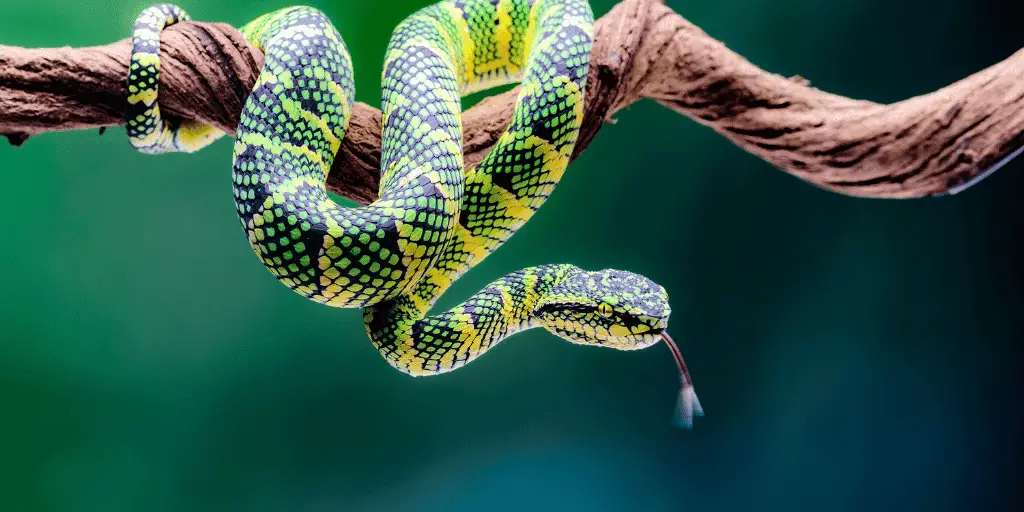
Crocodiles, Snakes, and Diverse Reptiles
Nicaraguan waterways teem with American crocodiles, formidable apex predators reaching up to 20 feet long. Crocodiles play vital ecological roles, cycling nutrients and linking aquatic and terrestrial food chains.
Their continued presence indicates healthy freshwater ecosystems. However, crocodiles face threats from hunting and habitat degradation, making enforced legal protections essential for the survival of this Living Fossil.
A myriad of snake species also dwell in Nicaragua’s diverse habitats. Colorful parrot snakes and milk snakes frequent forest floors, while venomous fer-de-lance pit vipers lurk in rainforest understories. Aquatic boa constrictors ply slow-moving river tributaries. Habitat loss and exploitation for skins impact reptile populations, but crocodiles and many snakes find refuge in protected areas like Indio Maíz Biological Reserve.
Smaller yet no less fascinating reptiles round out Nicaragua’s herpetofauna. Slippery geckos scale building walls after dusk and spiny-tailed iguanas dash between cacti in arid scrublands, while prehistoric-looking caiman lizards prowl Pacific mangroves. Community education helps foster human-reptile coexistence as conservationists emphasize reptiles’ irreplaceable ecological significance.
Frogs and Toads: A World of Amphibians
Over 175 frog and toad species call Nicaragua home, ranging from less than an inch to over a foot long. Their extraordinary biodiversity stems from specialized adaptations to Nicaragua’s diverse microclimates and ecosystems. Poison dart frogs in particular exhibit dazzling color variations, warning potential predators of their toxic skin secretions.
While most species occupy forest floors, several have adapted to arboreal environments. Red-eyed tree frogs sport vivid green bodies with blue-and-yellow striped legs, using expert camouflage to evade predators.
Their toe pads allow them to climb smooth leaves, while oversized eyes give them superb night vision. Male tree frogs gather in ponds and puddles after heavy rains, unleashing boisterous mating calls to attract females.
Nicaragua’s exceptional amphibian diversity remains at risk however, as pollution, climate change, and habitat destruction threaten delicate reproductive cycles dependent on moisture and temperature stability. Protected areas provide critical safe zones where frogs can thrive, while habitat restoration helps resurrect degraded ecosystems. Continued vigilance is key to preserving at-risk frog populations.
4. Freshwater and Marine Life
Freshwater Fish: Cichlids, Bull Sharks, and More
Nicaragua’s complex system of rivers, lakes, and wetlands fosters exceptional freshwater biodiversity. Numerous cichlid species have adapted to niche aquatic microclimates, exhibiting an array of shapes, sizes, and colors. Fast-moving rivers support prized game fish like guapote and tarpon, while tiny killifish flit through tranquil lagoons.
Remarkably, bull sharks inhabit Lake Nicaragua, one of only a few freshwater shark habitats worldwide. Bull sharks patrol the lake’s shallow edges, feeding on catfish and tarpon. Their internal salt-retention abilities allow them to osmoregulate between marine and freshwaters.
However expanding agricultural runoff threatens Nicaraguan fisheries through pollution and sedimentation. Protecting riparian buffers along waterways and limiting pesticide use is paramount to safeguarding freshwater ecosystems.
Marine Wildlife: Whales and Coastal Species
Each winter, humpback whales undertake an epic migration from Antarctic feeding grounds to Nicaraguan Pacific shores to birth calves in sheltered bays. Males energetically compete to mate with females in spectacular displays of breaching, tail slapping, and complex vocalizations.
Locals operate tours for visitors to respectfully observe birthing and mating behaviors without disturbance. Other marine mammals like dolphins and sea turtles also thrive in Nicaragua’s productive marine habitats.
Nicaragua’s rich aquatic environments support over 75 fish species, from brilliant parrotfish that scrape algae off coral, to predatory barracuda and swarming anchovies that form dense bait balls. However, overfishing, pollution, and climate change threaten fragile coral reef and fish communities.
Marine reserves near San Juan del Sur allow local species to rebuild populations while restoring balance to the broader food web. Careful stewardship of Nicaragua’s aquatic resources will ensure they continue nourishing both wildlife and local communities alike.
5. Endangered Species and Conservation Efforts

Protecting Nicaragua’s Threatened Wildlife
Habitat loss and hunting threaten several of Nicaragua’s most vulnerable endemic species. Geoffroy’s spider monkeys struggle as expanding agricultural frontiers fragment prime rainforest habitats.
Baird’s tapirs also suffer diminished populations due to deforestation and subsistence hunting. However in Bosawás Biosphere Reserve, core tapir populations find refuge, playing vital seed dispersal roles to perpetuate the ecosystem.
Nonprofits partner with local communities on reforestation and sustainably managed forest concessions to preserve spider monkey and tapir habitat connectivity. Anti-poaching units conduct regular patrols while installing camera traps to monitor wildlife activity. Ecotourism offers glimpses of these endangered species, generating funds for local communities as incentives for ongoing conservation participation.
Still, habitat protection and poaching enforcement require persistent vigilance to ensure the survival of Nicaragua’s most threatened endemic species.
Sea Turtle Conservation
Five sea turtle species nest along Nicaragua’s sandy Pacific beaches. However, nesting populations saw sharp declines due to egg harvesting and coastal development. In response, grassroots conservation groups now protect crucial nesting beaches in La Flor Wildlife Refuge and near San Juan del Sur.
Hatcheries incubate and release thousands of hatchlings annually while beach patrollers safeguard females that come ashore to lay eggs. Locals use dim red lights along developed coastlines so nesting turtles can access undisturbed beaches.
Community participation is key for successful conservation, as incentives like homestays and guided tours make preserving turtles mutually beneficial. Plus, modest tourist fees fund local schools and infrastructure as added motivation.
Nicaragua also partners in the Eastern Pacific Hawksbill Initiative and wider networks that address threats facing migratory sea turtles far beyond national borders. By integrating local education with international cooperation, Nicaragua leads the way in community stewardship for the survival of imperiled marine species.
Conclusion: The Importance of Preserving Nicaragua’s Wildlife
Nicaragua’s exceptional biodiversity underscores its ecological importance on both regional and global scales. Safeguarding apex predators preserves balance for interconnected food chains reliant on thriving mammal, bird, and aquatic populations.
Abundant forests store carbon while generating rainfall critical for both wildlife and crops. And vibrant reef ecosystems nourish commercial fisheries. Protecting Nicaragua’s habitats and species inherently supports local communities through strengthening ecosystem services.
Culturally, wildlife also holds intrinsic value for Nicaraguans through art, folklore, and national symbols like the turquoise-browed motmot. Responsible ecotourism offers glimpses of iconic yet vulnerable species in their natural settings while directing tourist income to local schools, health clinics, and conservation. However, realizing such benefits requires ongoing vigilance.
As agricultural and urban frontiers continue expanding, the perseverance of protected areas and wildlife corridors grows increasingly vital. Continued reforestation efforts can help reconstitute degraded habitats and reconnect fragmented populations. Dedicating more marine territories as no-take zones allows fish stocks and threatened sea turtles to rebuild.
By integrating scientific expertise with community participation, Nicaragua leads the way globally in leveraging conservation for both ecological and social gains. Yet preserving these advances remains a persistent endeavor requiring continued education, cooperation, enforcement, and vigilance to safeguard Nicaragua’s natural heritage for future generations.


